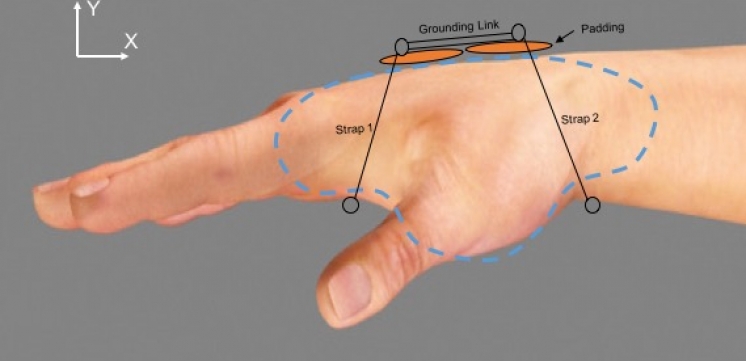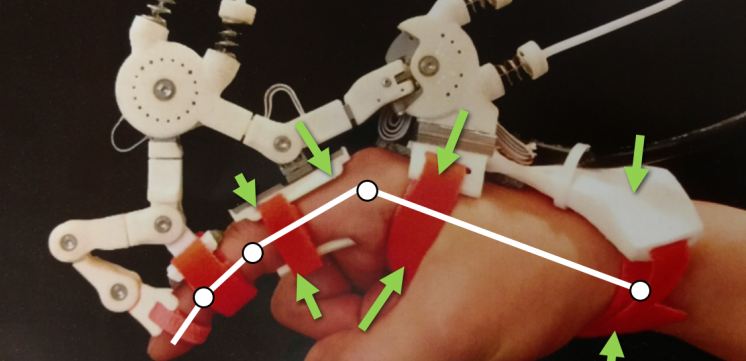Coupled human-robot systems can serve many functions: Rehabilitative robots for therapeutic exercises and quantitative patient assessment, assistive robots to augment human function, and robotic haptics platforms which could be the future of virtual reality.
All of these require reliable estimation of the user’s position as well as forces experienced in order to provide safe and controlled motion. Current systems do not account for relative movement and attachment forces at the interface. Viscoelastic properties of the skin, underlying soft tissue, compliant padding and antagonistic straps can cause significant estimation errors and even misalignment between the human limb and the robot.
Our research seeks to model and quantitatively assess the effects of soft tissue deformation, padding, and attachment methods. We focus on using computationally simple lumped parameter models that are light enough to potentially be run in real-time. The objective is to estimate and predict the sub-system behavior as closely as possible to enable better robot control, improved user ergonomics, and safe operation.




